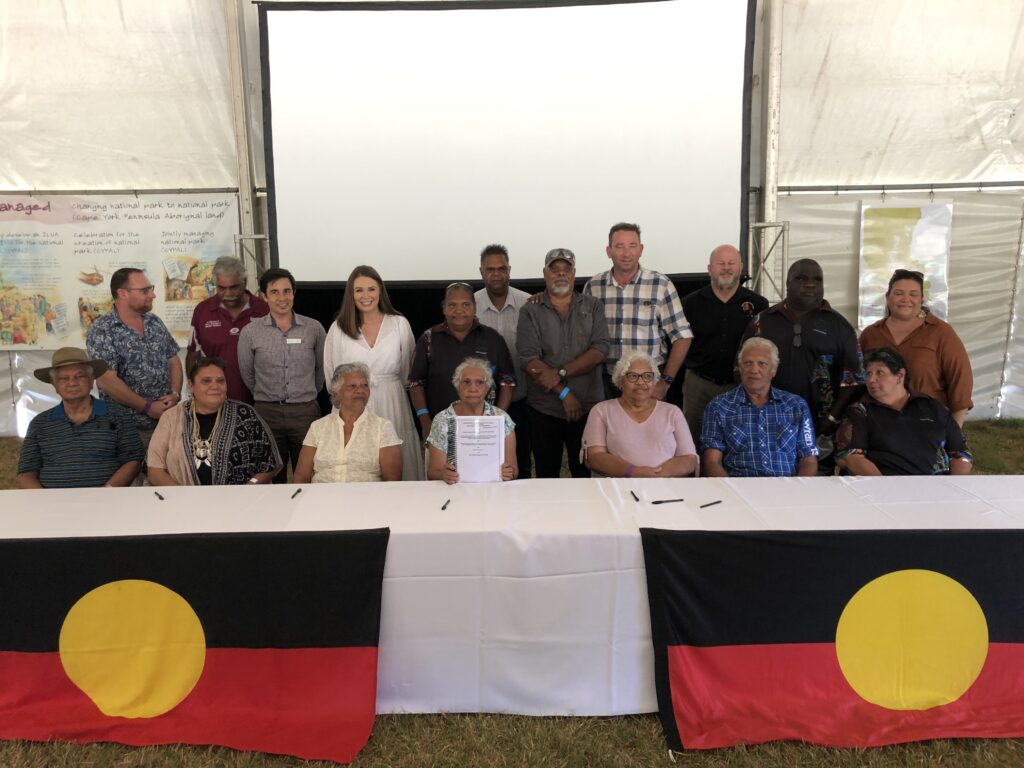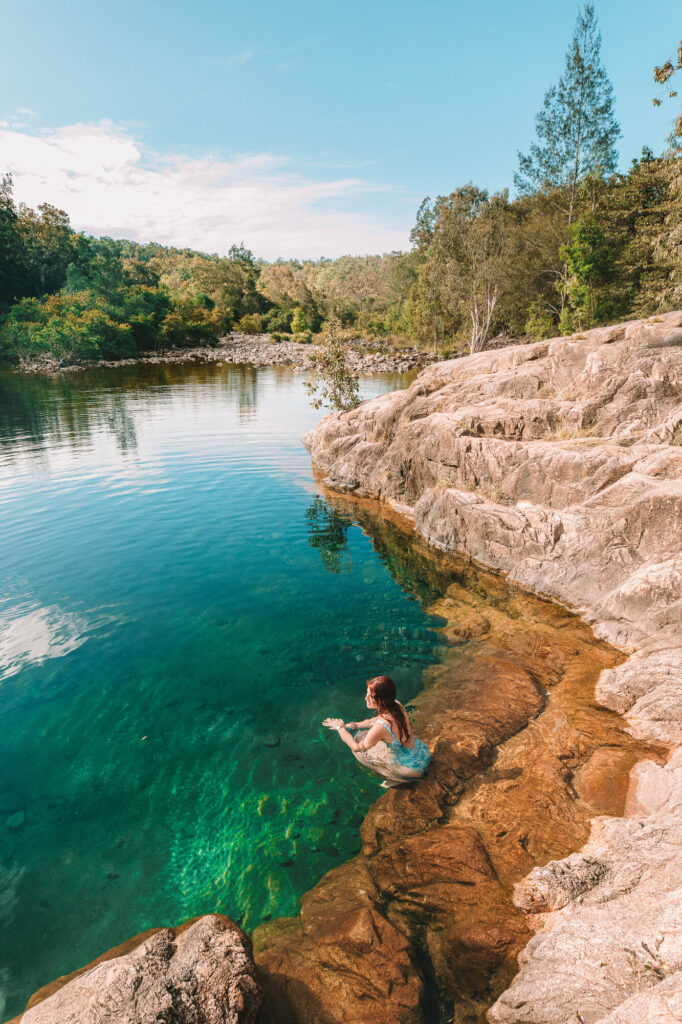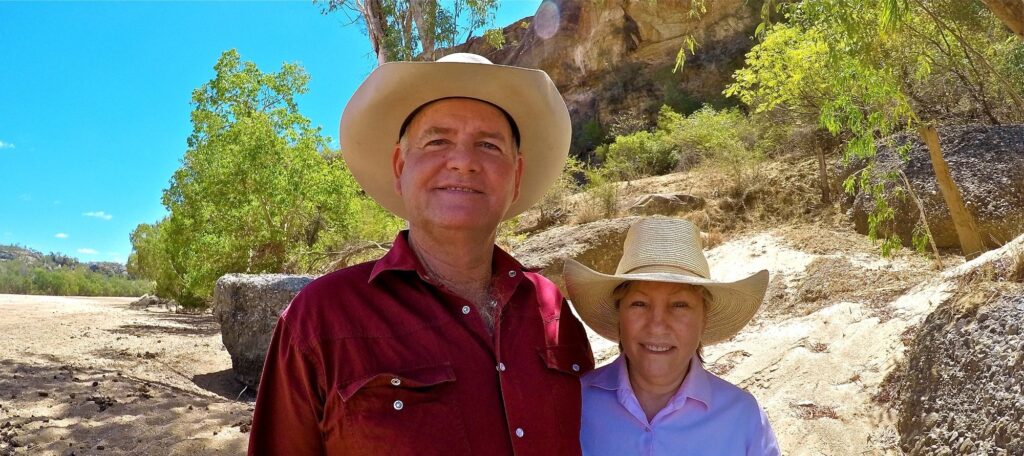Queenslanders want more protected areas to safeguard our native plants and animals, our cultural history and our way of life in the great outdoors. Here’s what that looks like…
First Nations Leadership
There is global recognition protected area growth and management must enable First Nations rights and interests and ensure equitable governance arrangements.
In Australia and Queensland, protected area policy and delivery has become increasingly inclusive of First Nations perspectives and there are a range of approaches at each level of government.
Indigenous Protected Areas
The Indigenous Protected Area (IPA) program is one of the most successful collaborative conservation efforts in Australia. IPAs contribute to biodiversity conservation, habitat restoration, and other land uses, while empowering Indigenous peoples in land stewardship and economic opportunities. Through this program, traditional knowledge is integrated with modern conservation strategies, creating a unique approach to environmental protection.
In 2022, IPAs contributed to 49.48% of the National Reserve System and covered 10.94% of Australia’s land area.
A new approach to National Parks
Queensland’s Landmark Cape York Tenure Resolution Program delivers a leading consent-based model of negotiating new Aboriginal owned national parks. This unique process has been supported by successive Queensland governments of all persuasions for nearly 20 years and has resulted in over 2 million hectares of Aboriginal owned national parks jointly managed with the Queensland Parks and Wildlife Service. This world-leading model has been extended to the Daintree, Naree Budjong Djara (Minjerribah), Gheebulum Kunungai (Moreton Island), Boodjamulla (Lawn Hill) national parks.


Left: The return of the former Jardine National Park (and surrounding resource reserves) as the Apudthama National Park (CYPAL) to the Atambaya, Angkamuthi, Yadhaykenu, Gudang and Wuthathi Peoples in 2022, and right: the return of the Daintree National Park to the Eastern Kuku Yalanji Peoples in 2021.
The benefits of joint management include diversified employment opportunities and an increase in revenue streams for national parks. There are also significant socio-economic benefits, with an increasing number of Indigenous rangers across the sector. Career opportunities, niche tourism and cultural maintenance all arise from this joint management approach and the growth in land management enterprises.
Nature Refuges
A number of Nature Refuges across Queensland on land owned and managed by First Nations people and organisations. The Nature Refuge program can compliment other approaches to land management and are often linked to outcomes under the Cape York Tenure Resolution Program. The program provides additional funding opportunities and allows for other compatible land uses within the protected area.
Dedicated support for Indigenous land holders is essential to the success of the Nature Refuge program.

More Queensland National Parks
As Queenslanders, we are lucky to live in one of the most wildlife-rich places on the planet.
National parks provide a legal safeguard for this wildlife.
Our parks are home to many endangered species of plants and animals, many of which would face uncertain futures without the protection of their park habitat.
And it’s not just Queensland’s wildlife that benefit from our parks.
Our protected areas provide places for exploration and exercise, rest and recuperation. They are the place where generations of families have made incredible memories together – walking, swimming, sleeping under the stars.
Our parks also provide a clear, tangible connection to one of the oldest cultures on Earth. First Nations Australians have been here for more than 50,000 years, and parks provide legal protection for the landscapes they have been connected with for thousands of generations.
Protecting Native Forests
Native State Forests in Queensland are more than just trees – they represent a vast and irreplaceable ecological treasure. These forests provide a critical habitat for threatened and endangered species and act as significant carbon stores, making their protection crucial for Queensland and Australia’s environmental credibility.
Transitioning these State Forests to conservation reserves would not only benefit nature but also regional communities. National and conservation parks generate billions in annual revenue from tourism, providing employment and recreational opportunities for locals and visitors in hospitality and nature-based tourism.


Protected Areas on Private Land
Protection of nature on private land is an important part of the solution.
Queensland’s Private Protected Area Program enables landholders to voluntarily permanently protect areas of high conservation value by declaring them as a Nature Refuge or Special Wildlife Reserve.
Unfortunately, this vital program is now dangerously underfunded, meaning support for new landholders wishing to enter into the program is limited.
